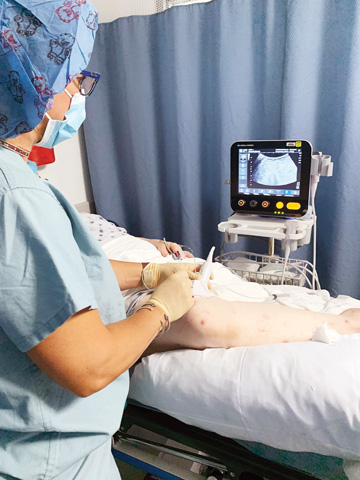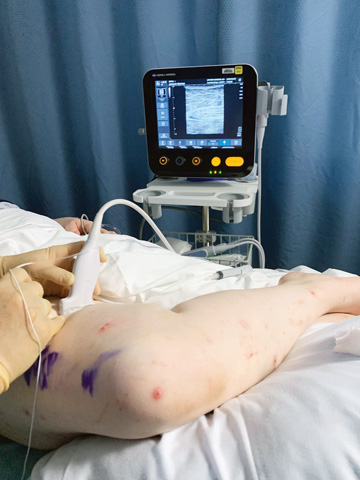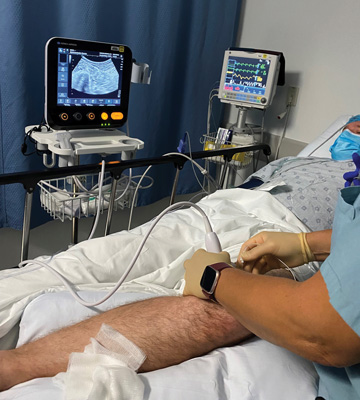Regional anesthesia requires a blending of science and art. Bathing nerves that innervate specific body parts with local anesthetics is a proven way to eliminate sensation and movement at surgical sites. Knowing exactly where to administer the anesthetic in order to optimize a nerve block’s effectiveness requires anesthesia providers to rely on their experience and skill.
When I began my anesthesia training in 1998, regional anesthesia was performed by recognition of anatomical landmarks, a positive response of fluid (cerebral spinal fluid or blood) or stimulation of the targeted nerve. These types of methods were difficult, time-consuming and often resulted in a failed block. Because of the many issues involved, regional blocks were used sparingly. But the widespread accessibility of ultrasound guidance has become a game-changer for regional anesthesia — providers are now able to place blocks with more precision and confidence. It’s also become an invaluable weapon to combat the opioid crisis. Combining ultrasound-guided regional blocks with a multimodal approach to perioperative pain management drastically reduces the need for postoperative narcotic use.
Of course, decreasing opioid use is only one of the many benefits of regional anesthesia. It can also decrease lengths of stay and reduce risks of postoperative complications such as nausea, vomiting and respiratory depression. In addition, CMS’s value-based purchasing program provides incentives for hospitals based on patient satisfaction. Even though the verbiage of pain management was removed from the program in 2016, patients’ overall safety and satisfaction are still measured. Mortality and complications, healthcare-associated efficiency and cost reduction are, too. Regional anesthesia addresses all of these factors by allowing surgical teams to deliver cost-effective, efficient and patient-satisfying care.
.svg?sfvrsn=be606e78_3)



.svg?sfvrsn=56b2f850_5)